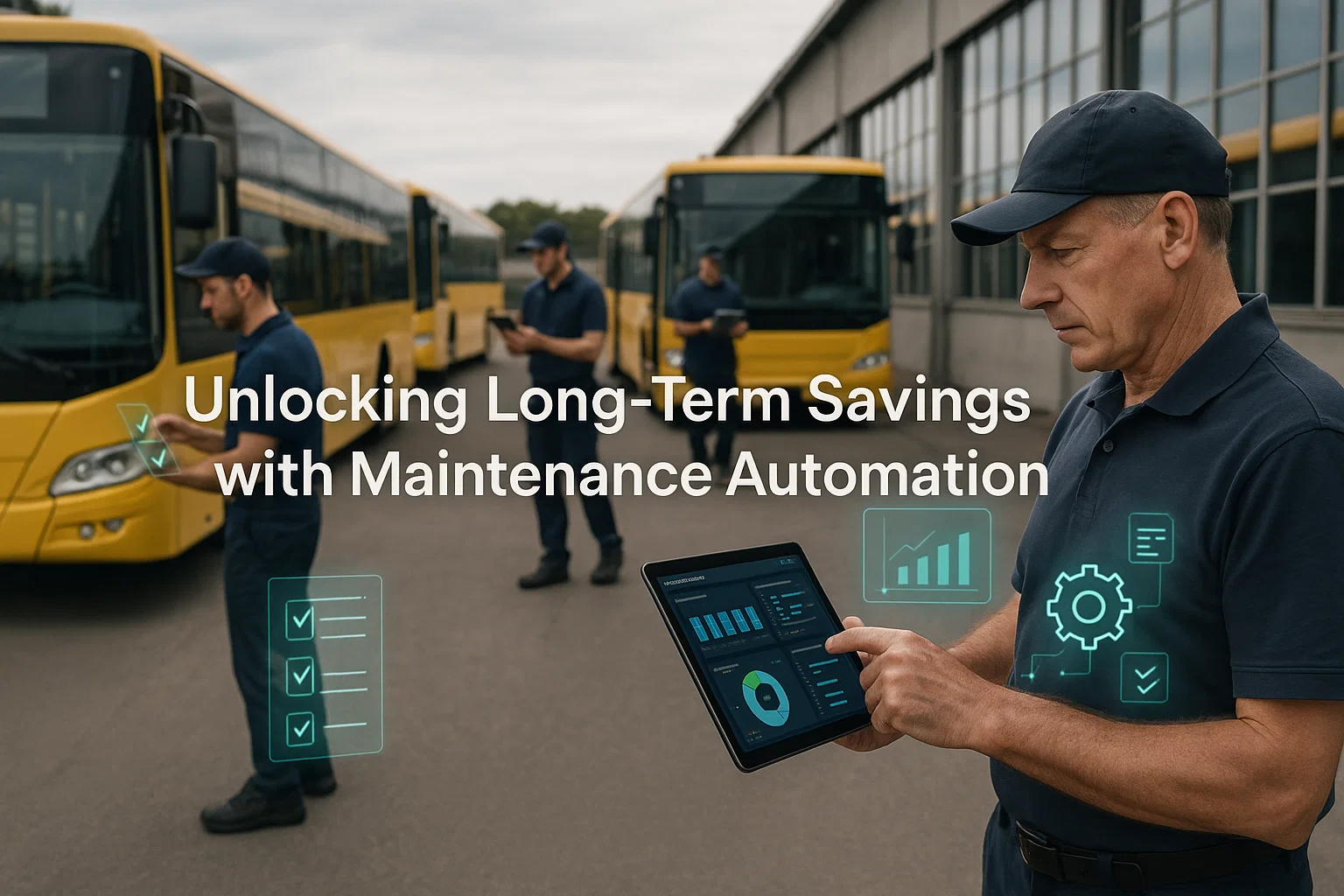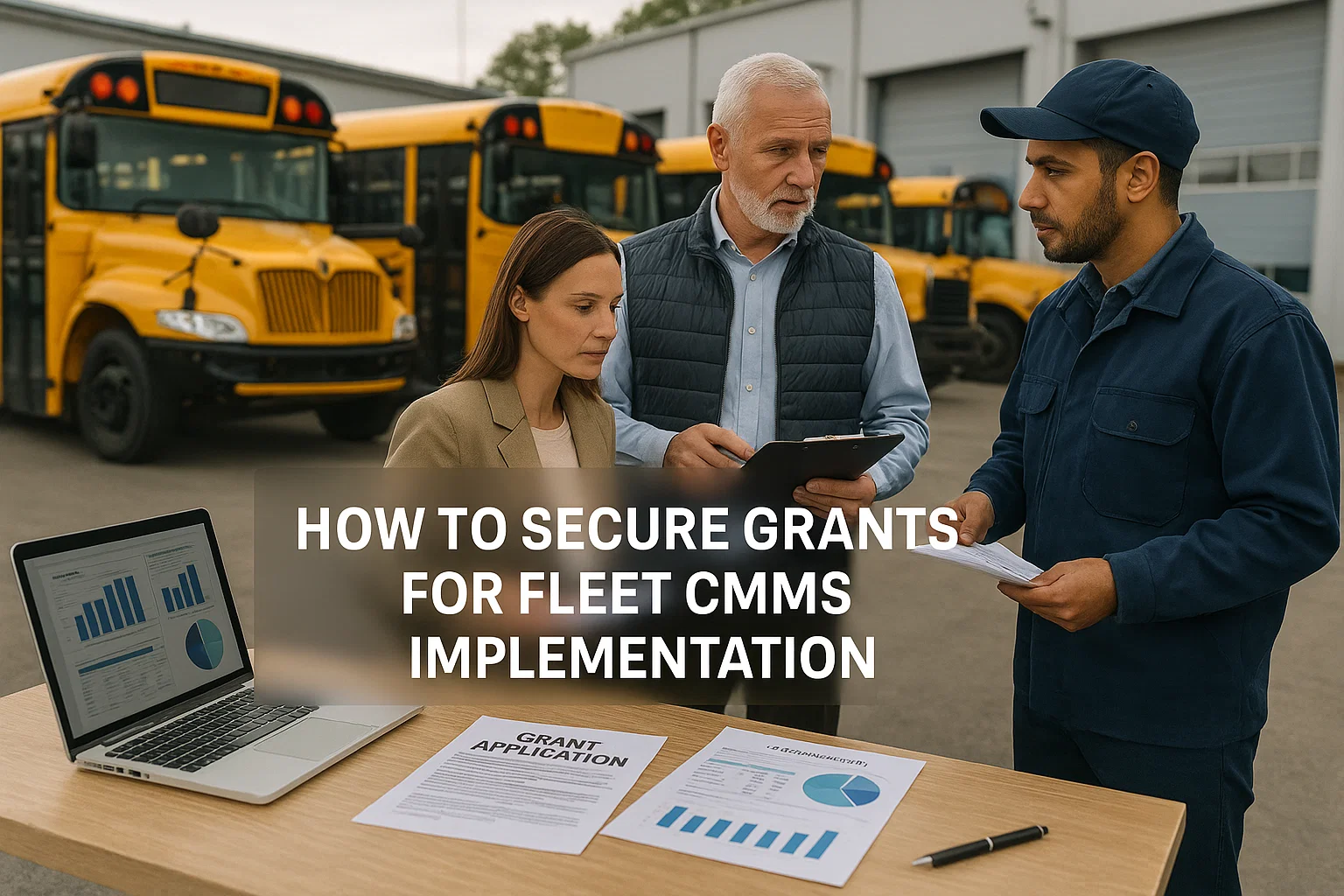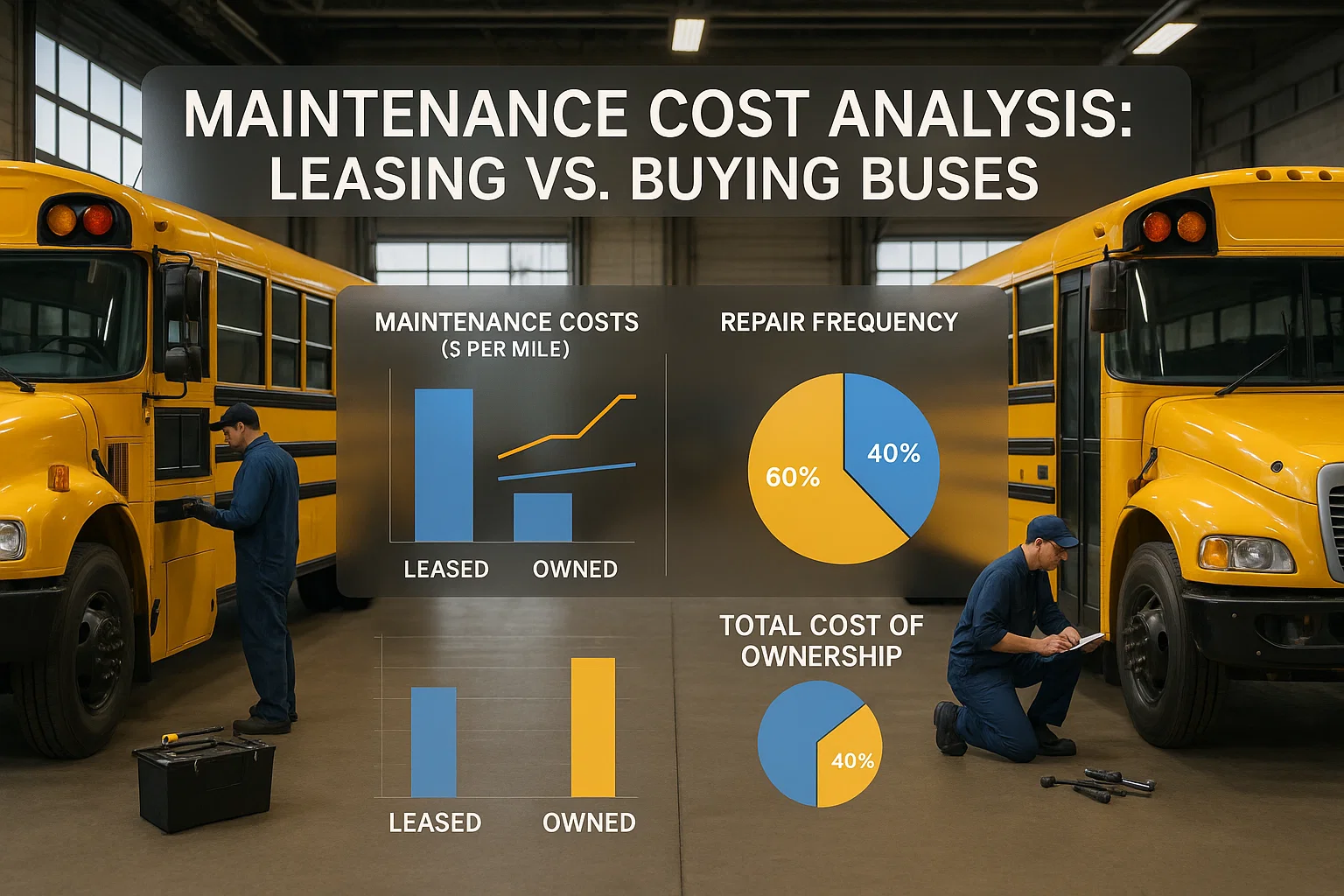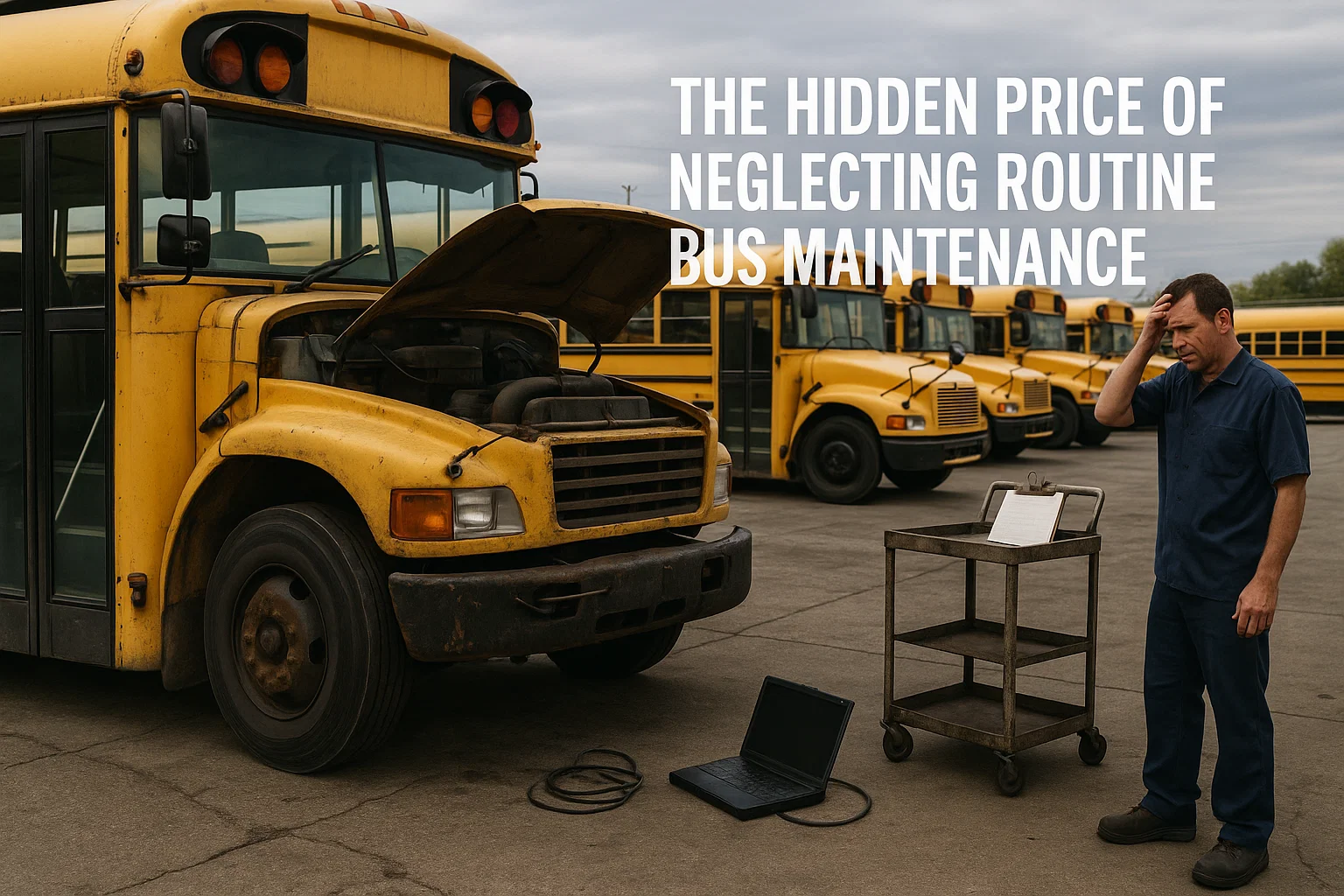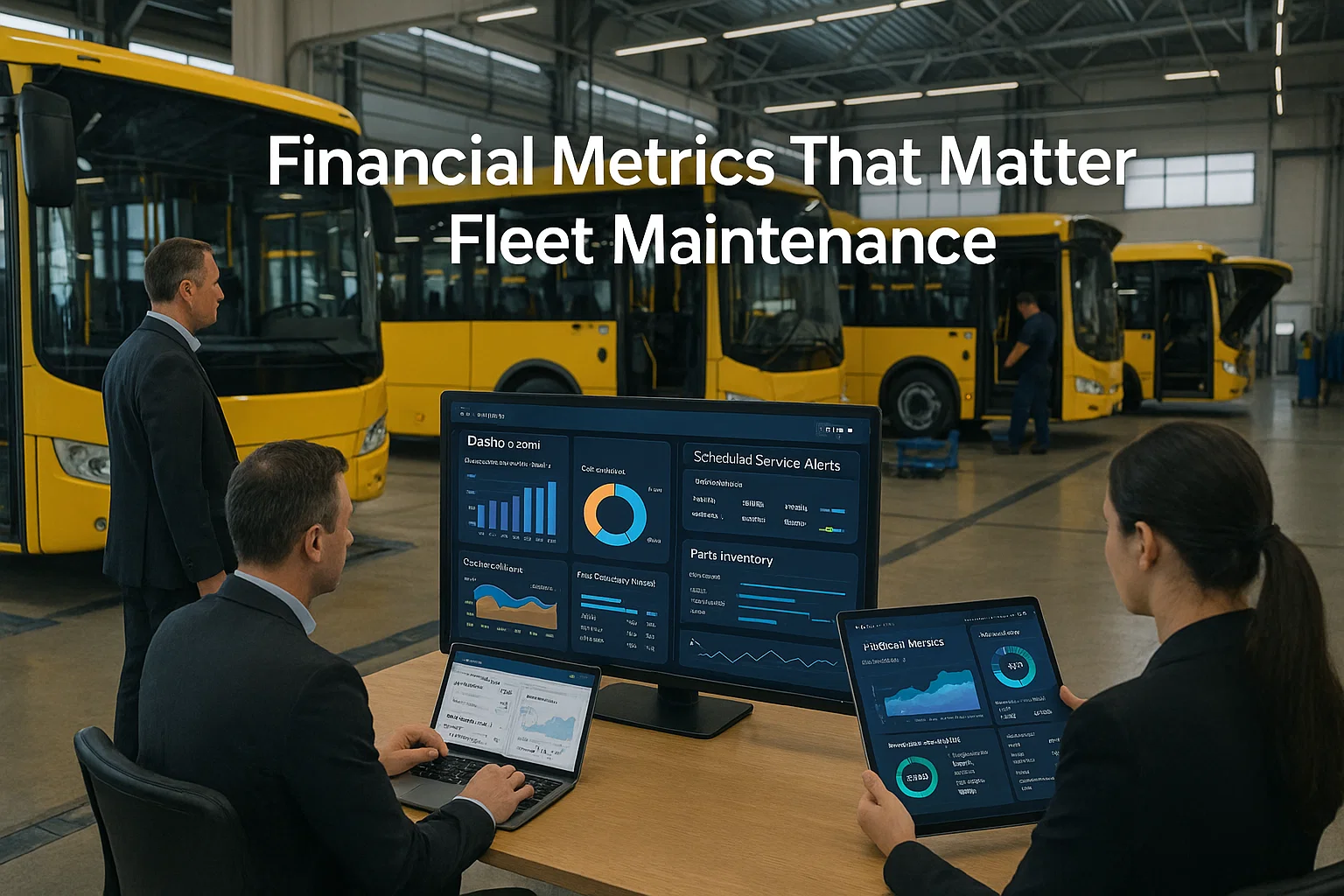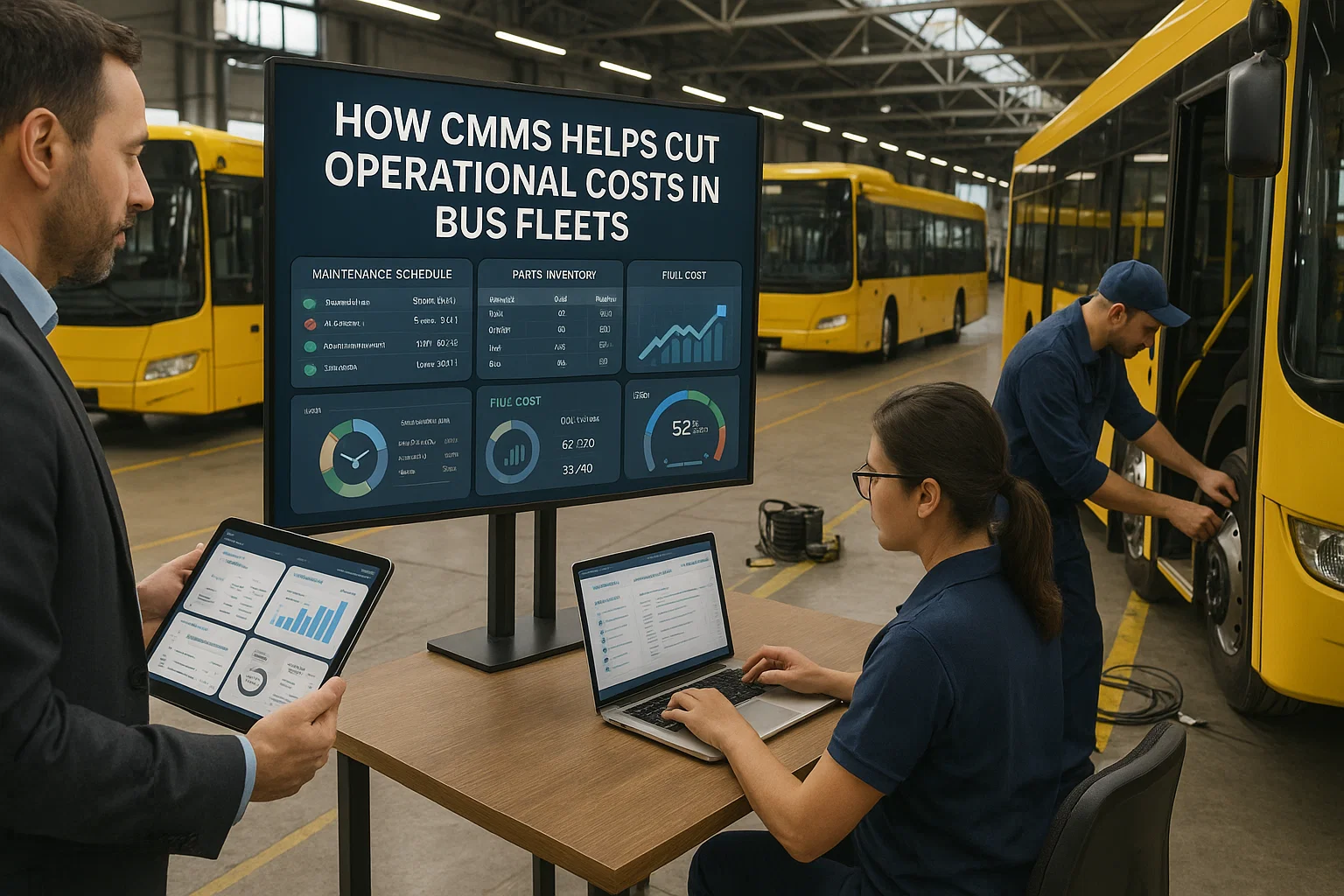The burden of paperwork in bus fleet maintenance operations costs US operators millions annually in lost productivity, errors, and compliance violations. Forward-thinking fleet managers are discovering how digital transformation through Bus CMMS platforms eliminates paper-based inefficiencies while creating streamlined, accountable maintenance operations that reduce administrative costs by up to 70%.
Traditional paper-based maintenance systems plague fleet operations with inefficient processes including lost documents, illegible handwriting, duplicate data entry, and delayed information sharing. Studies reveal that maintenance technicians spend 25% of their time on paperwork rather than actual repairs, while administrative staff dedicate 40% of their hours to manual document processing. Digital Bus CMMS solutions transform these outdated workflows into efficient, automated processes.
The transition from filing cabinets to cloud-based digital maintenance solutions represents more than simple modernization—it's a fundamental reimagining of how maintenance data flows through organizations. Real-time information access, automated compliance reporting, and instant communication capabilities deliver operational advantages that paper systems simply cannot match.
The Digital Transformation Framework
Successful paperwork elimination requires comprehensive digital infrastructure that addresses every aspect of maintenance documentation. Bus CMMS platforms create interconnected ecosystems where information flows seamlessly between departments, eliminating redundant data entry and ensuring everyone accesses current, accurate information.
Core Digital Components
The foundation of paperless maintenance begins with digital work orders that capture repair information at the point of service. Technicians use tablets or smartphones to document repairs with photos, videos, and detailed notes that automatically populate maintenance histories. This immediate data capture eliminates transcription errors while creating comprehensive repair records that support warranty claims and regulatory compliance.
Cloud-based storage ensures documents remain accessible from anywhere while eliminating physical storage requirements. Advanced search capabilities enable instant retrieval of any maintenance record, eliminating hours spent searching through filing cabinets. Automated backup systems protect against data loss while maintaining complete audit trails for compliance verification.
Digital Documentation Benefits
- Instant Information Access: Retrieve any maintenance record in seconds through powerful search functions
- Automated Compliance Reporting: Generate required DOT and regulatory reports with single clicks
- Real-Time Collaboration: Multiple users can access and update documents simultaneously
- Environmental Sustainability: Eliminate paper consumption and physical storage requirements
- Cost Reduction: Save 70% on administrative costs through process automation
The Hidden Costs of Paper-Based Systems
Critical Paperwork Problems
- Lost Documentation: 15% of paper documents are misplaced, with 7.5% lost permanently
- Data Entry Errors: Manual transcription results in 30% error rates affecting maintenance accuracy
- Delayed Information Flow: Paper forms take 3-5 days to reach decision-makers
- Compliance Risks: Missing or incomplete paperwork leads to regulatory violations and fines
- Storage Costs: Physical document storage consumes valuable space and requires ongoing management
These paperwork challenges translate directly to operational inefficiencies and increased costs. Bus CMMS digital solutions address each issue through automated workflows that ensure information accuracy, accessibility, and compliance. The elimination of paper-based processes delivers immediate operational improvements while positioning fleets for long-term success.
Financial Impact Analysis
The true cost of paperwork extends beyond obvious expenses like paper and printing. Hidden costs include staff time for filing, searching, and recreating lost documents. Fleet operators report spending $20,000-50,000 annually on paper-related expenses, while digital solutions eliminate these costs entirely. The ROI from paperwork elimination often justifies entire CMMS implementations within months.
Implementing Paperless Maintenance Operations
The transition to paperless maintenance requires strategic planning and phased implementation. Successful fleet operators using Bus CMMS follow proven methodologies that ensure smooth transitions while maintaining operational continuity throughout the digital transformation process.
Implementation Roadmap
Phase 1: Digital Foundation
Establish cloud infrastructure, configure user accounts, and digitize existing critical documents for immediate access
Phase 2: Process Digitization
Convert paper forms to digital formats, implement electronic signatures, and train staff on new procedures
Phase 3: Full Automation
Enable automated workflows, integrate systems, and eliminate remaining paper processes
Mobile-First Documentation
Mobile devices serve as primary tools for paperless maintenance operations. Technicians equipped with tablets can access repair manuals, complete inspection checklists, and document repairs without ever touching paper. Mobile applications synchronized with Bus CMMS platforms ensure real-time data updates across the organization.
Voice-to-text capabilities and photo documentation further streamline information capture. Technicians can dictate repair notes while working, eliminating the need for written documentation. Photo and video evidence provides visual verification of repairs and conditions, creating more comprehensive maintenance records than paper ever could.
Digital Forms and Electronic Signatures
The replacement of paper forms with digital alternatives represents a crucial step in paperwork elimination. Modern Bus CMMS platforms provide form builders that recreate existing paper documents while adding intelligent features like auto-population, validation rules, and conditional logic.
Advanced Form Features
- Dynamic Form Logic: Forms adapt based on user inputs, showing only relevant fields
- Auto-Population: System automatically fills known information from existing databases
- Validation Rules: Prevent submission of incomplete or incorrect information
- Electronic Signatures: Legally binding digital signatures eliminate printing and scanning
- Automatic Routing: Completed forms automatically route to appropriate approvers
Electronic signature capabilities ensure legal compliance while eliminating printing, signing, and scanning cycles. Multi-level approval workflows route documents through approval chains automatically, reducing processing time from days to minutes. Audit trails track every action, providing complete transparency and accountability.
Document Management and Retrieval Systems
Effective paperless operations depend on robust document management capabilities. Bus CMMS platforms provide centralized repositories where all maintenance documentation resides in organized, searchable formats that eliminate the chaos of paper filing systems.
Intelligent Organization
Digital documents automatically organize by vehicle, date, repair type, and other relevant categories. Advanced tagging systems enable multiple classification methods, ensuring documents can be found through various search paths. Full-text search capabilities scan document contents, finding information that would be impossible to locate in paper systems.
Version control maintains document histories, tracking changes and preserving previous versions for reference. This capability proves invaluable for warranty claims, accident investigations, and compliance audits. Automated retention policies ensure documents are kept for required periods then archived or deleted according to regulations.
Integration Capabilities
Document management systems integrate with other fleet management tools, enabling seamless information flow. Maintenance records link directly to vehicle histories, parts inventories connect to purchase orders, and inspection reports automatically update compliance dashboards. This integration eliminates duplicate data entry while ensuring information consistency across systems.
Compliance and Audit Advantages
Digital Compliance Benefits
- Instant Audit Readiness: All required documentation accessible within seconds
- Complete Audit Trails: Every action tracked with timestamps and user identification
- Automated Reporting: Generate compliance reports without manual compilation
- Guaranteed Retention: Documents automatically retained for required periods
- Reduced Violation Risk: Automated alerts prevent compliance lapses
Digital documentation through Bus CMMS platforms transforms compliance management from a burden into a competitive advantage. Automated reporting capabilities generate required DOT, FMCSA, and state reports with perfect accuracy, eliminating hours of manual compilation and reducing error risks.
Staff Training and Change Management
Successful paperwork elimination requires comprehensive staff training and change management strategies. Employees accustomed to paper processes need support transitioning to digital workflows. Leading fleet operators invest in training programs that ensure successful adoption and maximize system benefits.
Training Program Components
Digital Literacy Development
Basic computer and mobile device skills training ensures all staff can navigate digital systems confidently
System-Specific Training
Hands-on training with actual CMMS interfaces and workflows relevant to each role
Ongoing Support Programs
Continuous learning opportunities and help desk support for questions and challenges
Change Management Strategies
Resistance to change represents the biggest obstacle in paperwork elimination. Successful implementations address concerns proactively, demonstrating how digital solutions make jobs easier rather than more complex. Champions within each department help peers adapt to new processes while providing feedback for continuous improvement.
Measuring Success and ROI
Fleet operators implementing paperless maintenance through Bus CMMS platforms consistently report exceptional returns on investment. The combination of reduced administrative costs, improved efficiency, and enhanced compliance delivers measurable financial benefits that justify digital transformation investments.
Quantifiable Benefits
- 70% Reduction in Administrative Costs: Eliminate paper, printing, storage, and filing expenses
- 50% Faster Document Processing: Digital workflows eliminate manual routing delays
- 90% Improvement in Document Retrieval: Find any record in seconds versus hours
- 60% Reduction in Compliance Violations: Automated tracking prevents documentation gaps
- 85% Space Savings: Eliminate filing cabinets and document storage areas
Beyond direct cost savings, paperless operations improve employee satisfaction, enhance professional image, and support environmental sustainability goals. These intangible benefits often prove as valuable as measurable financial returns, contributing to overall organizational success.
Environmental and Sustainability Impact
The environmental benefits of eliminating paperwork extend beyond simple paper savings. Bus CMMS digital solutions support comprehensive sustainability initiatives that reduce environmental impact while enhancing corporate responsibility profiles.
Environmental Benefits
A typical 100-bus fleet generates 500,000 pages of maintenance documentation annually, consuming 60 trees and producing 5,000 pounds of CO2. Digital documentation eliminates this environmental impact while reducing energy consumption associated with document storage and transportation. Fleet operators report achieving sustainability goals faster through paperwork elimination than any other single initiative.
Digital processes also reduce vehicle emissions by eliminating document transportation between facilities. Remote access capabilities enable staff to work from any location, reducing commuting requirements and associated emissions. These cumulative benefits position fleets as environmental leaders while reducing operational costs.
Frequently Asked Questions
How long does it take to transition from paper to digital maintenance documentation?
Most fleet operators using Bus CMMS complete basic digital transitions within 60-90 days, with full paperless operations achieved in 4-6 months. The phased approach begins with critical documents like work orders and inspection reports, gradually expanding to encompass all maintenance documentation. Initial benefits emerge immediately, with administrative time savings of 30% typical within the first month. Historical document digitization can continue in parallel without disrupting operations. Fleet managers report that the structured implementation approach minimizes disruption while ensuring steady progress toward complete paperwork elimination.
What makes Bus CMMS superior to generic document management systems for fleet operations?
Bus CMMS combines document management with fleet-specific functionality that generic systems lack. The platform understands maintenance workflows, DOT compliance requirements, and transit operational needs, automatically organizing documents according to industry standards. Pre-configured forms for common maintenance tasks, integration with vehicle diagnostic systems, and built-in regulatory reporting eliminate customization requirements. Unlike generic solutions, Bus CMMS includes mobile capabilities optimized for shop floor use, electronic signature workflows designed for multi-level maintenance approvals, and automated retention policies aligned with transportation regulations. This specialization delivers 50% faster implementation and 40% better user adoption compared to generic platforms.
Conclusion
The elimination of paperwork through digital maintenance solutions represents a transformative opportunity for US bus fleet operators. Bus CMMS platforms deliver comprehensive digital ecosystems that replace inefficient paper processes with streamlined, automated workflows that reduce costs, improve efficiency, and ensure compliance.
The documented benefits—including 70% administrative cost reduction, 90% faster document retrieval, and 60% fewer compliance violations—demonstrate the compelling value of digital transformation. These improvements translate directly to competitive advantages in an industry where operational efficiency determines success.
Success in paperwork elimination requires more than technology deployment; it demands commitment to change management, staff development, and continuous improvement. Fleet operators who embrace comprehensive digital maintenance solutions position themselves for sustained success in an increasingly digital transportation industry.
Ready to Go Paperless?
Discover how Bus CMMS can eliminate paperwork and transform your maintenance operations.


